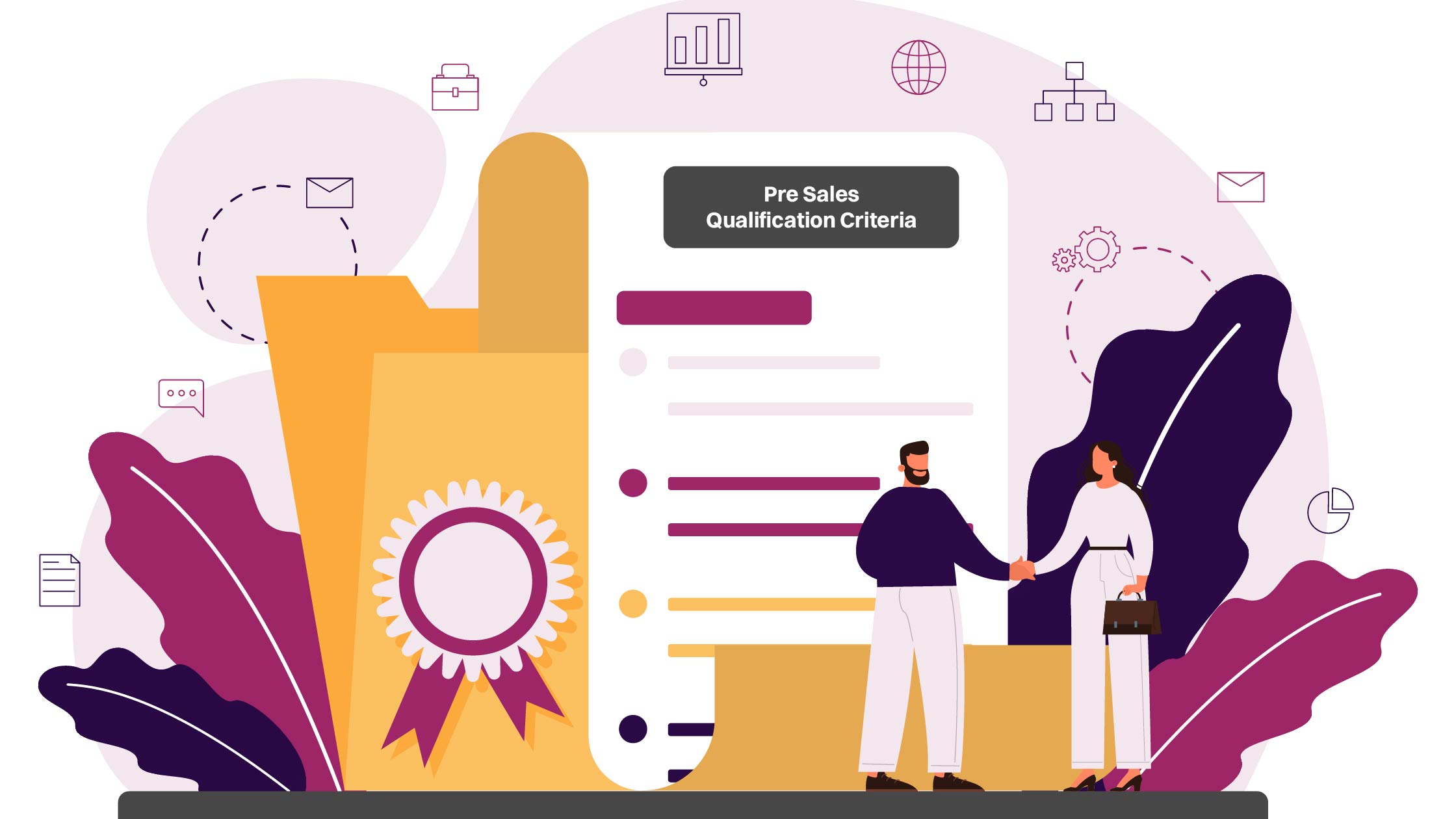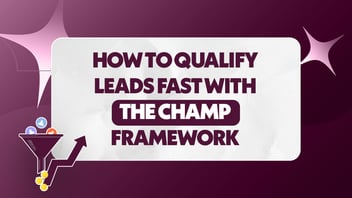
How to Pre-Qualify Sales Leads and Boost Your Closing Rate
Have you ever felt like you're spending a lot of time chasing down leads that never seem to convert into sales? Well, our pre-qualifying sales leads criteria can help you avoid that frustration and maximize your sales efforts.
Not pre-qualifying your leads can also cause challenges for salespeople, including wasted time and resources, lost opportunities, and even damage to your reputation.
How to Pre-Qualify Sales Leads
To help you avoid these challenges and improve your sales process, we've put together a step-by-step approach to pre-qualifying your sales leads:
- Research The Lead
- Contact The Lead
- Qualify The Lead
- Prioritize Leads
1. Research The Lead
So, you're interested in learning about how to pre-qualify a sales lead, right?
Well, one of the key things you need to do is gather information about the company and decision-makers. This means digging into the company's website, social media presence, and any other public information you can find.
Once you've got that, you'll want to analyze the company's financial health and market position. This will give you an idea of how well they're doing and whether they're a good fit for your product or service. You can get information for this from websites like: Yahoo Finance, Bloomberg, Google Finance, Forbes
Finally, you'll want to determine the company's current pain points and needs. What problems are they facing right now that you can solve? By doing all of this research upfront, you'll be able to qualify your sales leads better.
Tip: After pre-qualifying multiple leads, you can prioritize the leads and allocate them to AEs accordingly to close the deal.
Other more common questions when thinking about researching the lead is:
What other methods can you use to generate sales leads beyond those provided by your marketing team?
Networking: Attend networking events, conferences, and trade shows where you can meet potential customers in your industry. Joining local business groups and associations can also help you connect with potential leads.
How should you qualify the leads provided by your company and those you generated yourself? What is the profile of an ideal prospect?
Prior to qualifying the leads, you would need to learn as much as you could about your consumers to figure out their wants and recognize and understand the factors that affect their purchasing decisions. Social networking sites like Facebook and LinkedIn offer relevant data and may be utilized to help with your study into the characteristics of the perfect prospect you are aiming for.
A person who meets the criteria for an ideal prospect needs the company's solutions, has the resources to pay for them, and is in a position to order them. With your selected prospects, you can plan an appropriate engagement, formulate pertinent questions, produce an engaging presentation, and approve a more relaxed contact to qualify your sales leads.
2. Contact The Lead
The next step in the process is contacting the lead.
When it comes to pre-qualifying sales leads, making an initial phone call to introduce yourself and your company is an imminent step. This allows you to establish a personal connection with the lead.
During the call, it's important to listen carefully to the lead's needs and concerns. Then you can answer any questions they may have about your company or product. Finally, schedule a follow-up call or meeting if the lead is interested.
Example: After making an initial call to that company, if they express interest in your solution, you can schedule a meeting to discuss it further.
3. Qualify The Lead
Following up on the previous step, the next step is to qualify the lead.
One of the most important things you can do is to ask the right questions to determine whether the lead is a good fit for your solution. Additionally, you want to make sure that you understand their pain points and needs.
Then determine whether or not your product or service can actually address those needs.
Here are 5 sample questions you can ask to pre-qualify your leads:
- What is your budget for this project?
- When are you looking to make a purchase?
- What specific pain points are you experiencing that our solution could address?
- Have you used a similar product or service before? If so, what did you like or dislike about it?
- How involved are you in the decision-making process, and who else will be involved in making the final decision?
Furthermore, you can also use lead qualification methods like BANT and NOTE.
BANT and NOTE are two different frameworks used to qualify leads in sales and marketing.
BANT stands for Budget, Authority, Need, and Timeline. It is a traditional framework that has been used in sales for decades. The BANT framework helps sales teams determine whether a lead is qualified or not by asking the following questions:
- Budget: Does the lead have a budget to purchase the product or service?
- Authority: Does the lead have the authority to make purchasing decisions?
- Need: Does the lead have a need for the product or service?
- Timeline: What is the timeline for making a purchasing decision?
The BANT framework is useful for determining whether a lead is a good fit for a particular product or service.
On the other hand, NOTE stands for Need, Opportunity, Timing, and Effect. It is a more modern framework that takes into account the changing nature of the buying process. The NOTE framework helps sales teams determine whether a lead is qualified or not by asking the following questions:
- Need: Does the lead have a need for the product or service?
- Opportunity: Is there an opportunity for the lead to benefit from the product or service?
- Timing: Is the timing right for the lead to make a purchasing decision?
- Effect: What is the potential impact of the product or service on the lead's business?
The NOTE framework is more focused on the lead's buying journey and is better suited to today's complex and dynamic sales environment.
4. Prioritize Leads
Last but not least, the final step is to prioritize leads.
When it comes to generating new business leads, it's important to prioritize them in a way that makes the most sense for your sales team.
One effective way to do this is by pre-qualifying your leads and assigning them a priority level based on their potential for a successful sale. This could involve looking at factors like the lead's level of interest, their budget, and how well they fit your ideal customer profile.
This can also help you avoid wasting time and effort on leads that are unlikely to convert into sales, allowing you to be more efficient and effective in your sales efforts.
Example: After pre-qualifying multiple leads, you prioritize the company as the most promising lead and allocate additional resources to close the deal.
According to a study by InsideSales.com, companies that prioritize their leads see a 70% increase in sales productivity and a 54% increase in quota attainment.
Additionally, one of the most important questions when talking about prioritizing leads is:
How should you prioritize your qualified prospects?
When you have eliminated your least promising leads, you must choose the prospects who will provide you and the business with the most potential and devote the most attention to them. You may achieve this by developing a profile of your ideal client. The qualities of the company's best customers and those it wants to prioritize make up the ideal customer profile.To Finish Off
Prequalifying your sales leads is an important step in improving your sales process, boosting your closing rate, and increasing your revenue. If you're looking to streamline your sales process and improve your lead qualification, Revnew can help.




